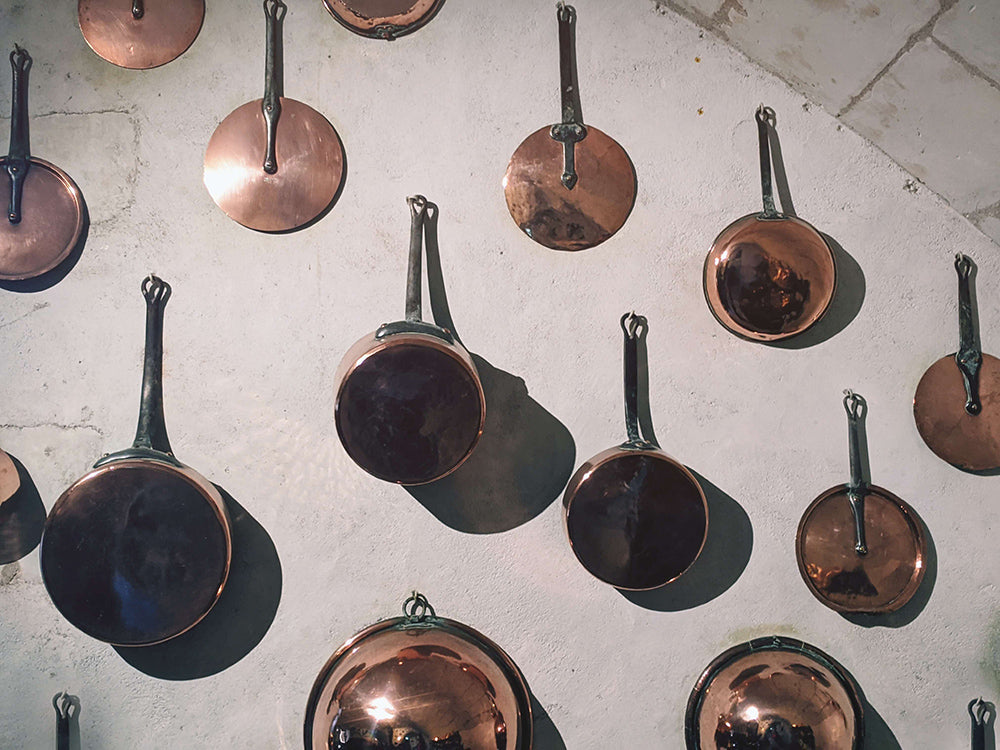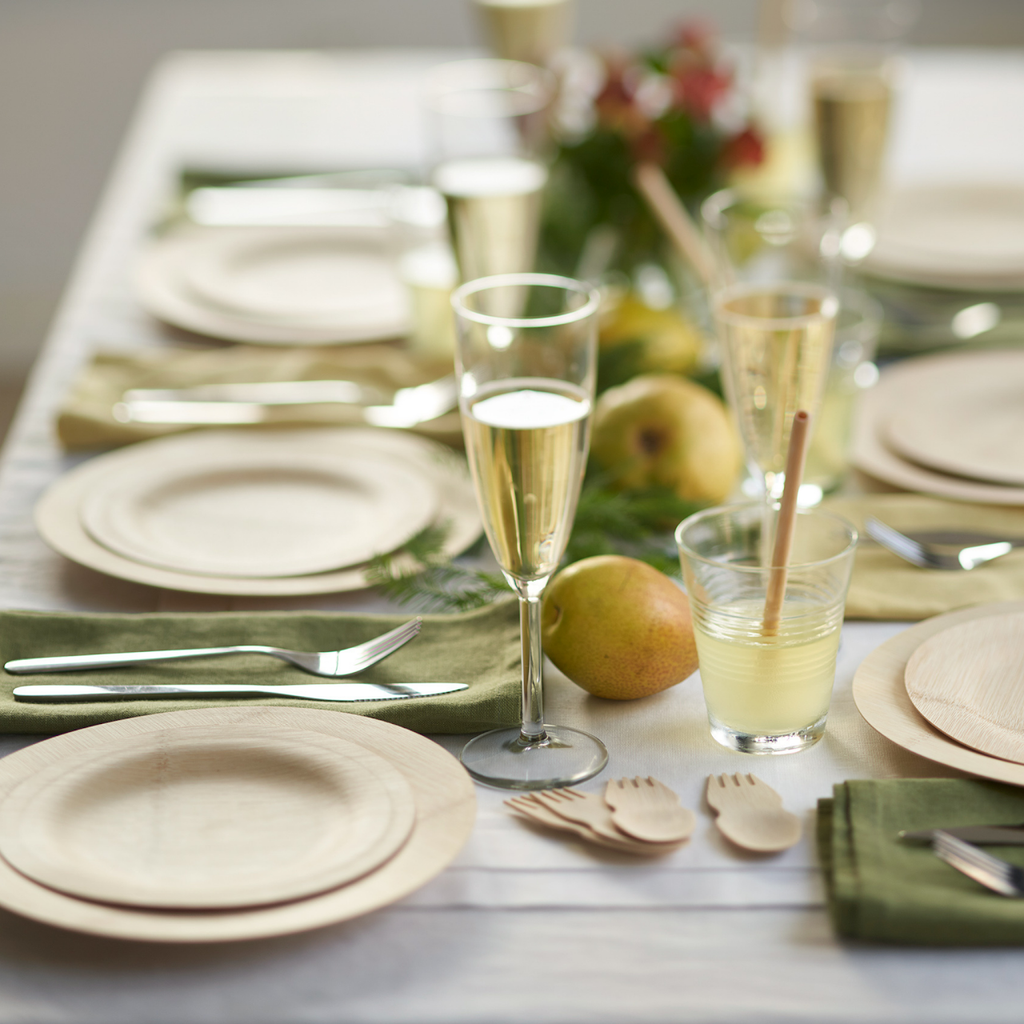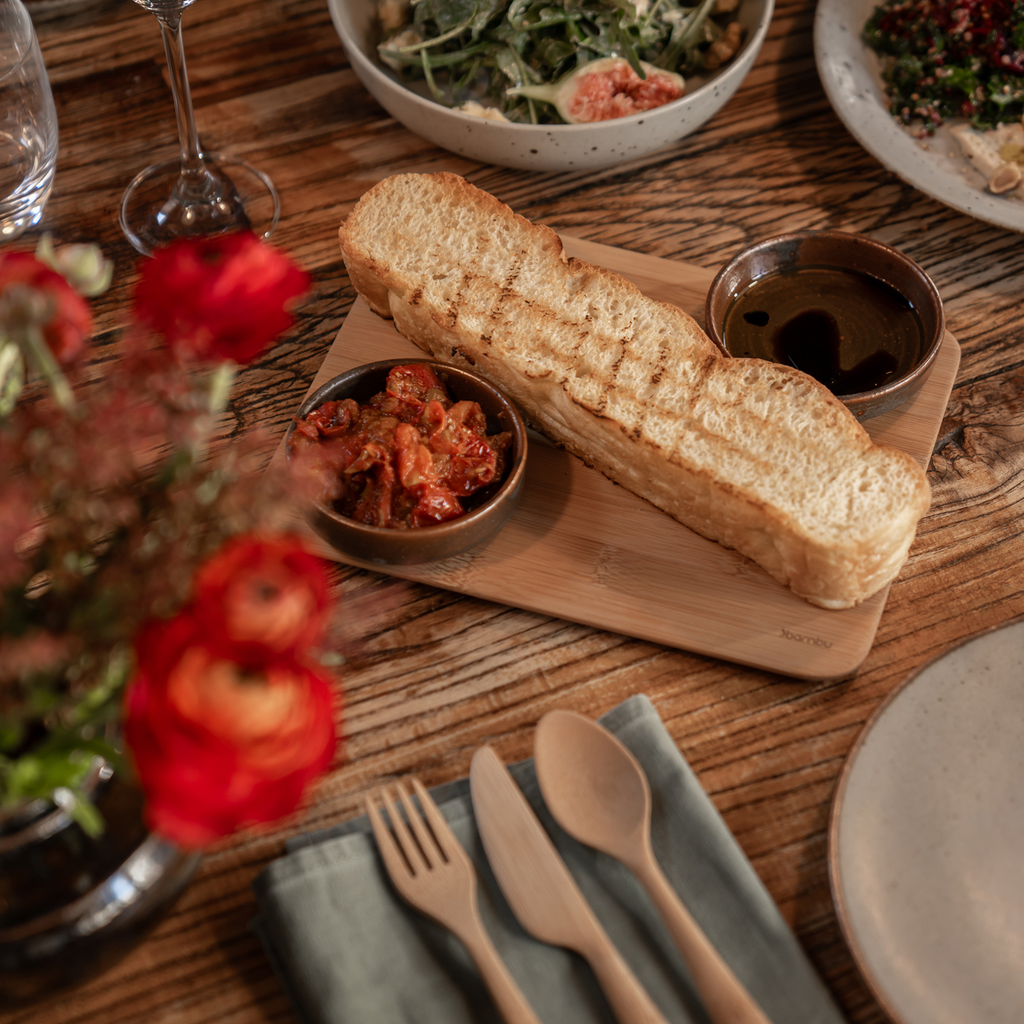Nonstick and non-toxic cookware may sound similar, but there can be a big (and potentially dangerous) difference between the two. Here’s why you shouldn’t wait to find out which type of pans are in your cabinets.
When it comes to the items in your kitchen, few are used as much as your favorite frying pan and spatula. From cooking eggs in the morning to sauteeing vegetables for dinner, these items are an integral part of mealtime. And what they’re made of can make a big impact on your health.
Why Do You Need Cookware That Is “Safe”?
These days, it can feel like there’s a constant list of things that need to be done to ensure that your home is toxin-free. So it’s natural to wonder if so-called “safe” cookware is all that different from the pots and pans you already have (or, if it’s just another spout of greenwashing). But the truth is, your cookware may be causing you more harm than good.
Thorough research shows that there is indeed “safe” and unsafe cookware options. And the unsafe options have some startling issues.
The material that brought cookware safety to light is commonly known as Teflon. Teflon, a non-stick coating often used on pots and pants, contains chemicals called PFA’s (also know as PFO’s and PFOA’s). According to the FDA and CDC, exposure to these chemicals has been linked to many types of cancer as well as infertility and liver damage.
After the news about these dangerous side-effects broke out, many cooks tossed their Teflon pans away. But PFA’s are far from gone. Known as “forever chemicals” because they stay in the soil and water for millenia after they’re created, PFA’s have been re-branded under new names by many manufacturers. And they’re still a common ingredient in the non-stick cookware found today.
Along with cookware coated with PFA’s, there are several other materials that can cause more harm than good in your kitchen. Because of the health concerns these types of cookware present, choosing safe, non-toxic cookware has never been more important. After all, your cookware might be one of the most-used items in your home.
Pots And Pans That Are Non-Toxic Keep Your Food Chemical-FreeForever chemicals like PFA’s are found in much more than just cookware. But there’s a good reason why keeping them out of your kitchen is especially important.
Like many of us today, you may be doing your best to choose organic produce and natural ingredients. Yet, if they’re cooked in a pan riddled with chemicals, your meals might be much less healthy than you think.
At high temperatures, many non-stick coatings begin to disintegrate and release fumes into and around the foods they’re in contact with. This means that chemicals can be inhaled while cooking, and even end up in your meal. In extreme cases, off-gassing of PFA’s can lead to flu-like symptoms.
Additionally, coated pans are often easily scraped or damaged by metal cooking utensils. When the coating is scratched off, it can mix into your food. Typically, this happens in such small pieces, it’s unlikely you’ll notice it. While this is a a great reason to choose cooking utensils that won’t damage your cookware, it’s also another reason to choose cookware that’s free of chemical-filled coatings.
The Best Cookware Material For Health, And Three To AvoidWhile the safety concerns of non-stick cookware are best understood, there are a few other types of cookware that should be avoided, too. Besides, there’s a fantastic, non-toxic alternative available that’ll keep your meals safe (and provide a nutritional boost).

Stay Away From These Types of Cookware
Any Cookware With PFA’sLook out for pots and pans that claim to be non-stick, but don’t tell you what they’re made of. While there are some non-toxic, nonstick pans on the market, many options still use PFA’s. To avoid them, look for pots and pan that clearly state that they are PFOA and PFA-free. Or, look for options that are coated with high-quality ceramic.
AluminumMany home chefs use aluminum pans and baking items for an easy, single-use option. However, the jury is out regarding the safety of this popular cooking material. Some state that aluminum pans are perfectly safe. But others conclude that exposure to aluminum can cause health issues. What we do know is that this material is highly reactive to acidic foods like tomatoes, and these reactions can cause aluminum to leach into foods. With that in mind, it might be best to avoid pure-aluminum cookware.
CopperOn it’s own, copper cookware is not safe for daily use. Unlined copper cookware can leach this poisonous metal into your meals. Luckily, when copper cookware is properly lined, it’s safe for use. So, you can keep that beautiful color in your kitchen. Just make sure that it’s lined with a safe and durable material, such as stainless steel. And, choose cooking utensils that won’t scratch or damage the lining, like bamboo.
Look For A Safe, Non-Toxic Cookware Option
One of the best non-toxic cookware options has been around for a very long time. Cast iron. Cast iron pots and pans are some of the most durable pieces of cookware out there, and they’re naturally free of toxins that can cause harm. For those that are iron-deficient (commonly seen in women and people who don’t eat red meat), cooking with a cast iron pan can also increase your iron levels. Cookware that’s not only free of chemicals, but actually adds nutritional value? We can’t think of a better solution!
And Don’t Forget About The Utensils, Either
Your pots and pans aren’t the only things that might need to be reevaluated. There may be some less-than-trustworthy materials hiding in your spatula and favorite spoon, too. Plastic cooking utensils melt at higher temperatures, which can cause unwanted chemicals and plastic particles to end up in your food. And while silicone is often considered the best utensil option for all temperatures, it’s unclear how safe it are.
What is known is that silicone can’t be recycled, and it takes thousands of years to decompose on it’s own. Instead, consider choosing cooking utensils that are proven to be non-toxic and are made from renewable materials, like bamboo. Bamboo utensils are safe for all types of cookware, and they’ll never melt or chip off into your meal. And to top it off, there’s nothing quite cooking and serving with an all natural, beautifully made utensil.
The Safest Cookware Options For Your Home
The pots and pans you use effect your health on a daily (often, three times a day) basis. So why not choose non-toxic cookware and cooking utensils that keep you, your family, and your food clean and safe?
Still Want Non-stick, Non-Toxic Pans? Try These
Caraway Nonstick PansCaraway offers beautiful cookware sets that are free of PFA’s, lead, and heavy metals. Thanks to a high-quality ceramic coating, this is non-stick non-toxic cookware that’s truly safe and just as easy to clean.

They say they’re the original, and for good reason. GreenPan was the first company to bring non-toxic, nonstick cookware to market. And today, they’re leading in innovation and sustainability. With everything from fry pans to crock pots, GreenPan is a fantastic option for almost any piece of non-toxic cookware.
A Nontoxic Air Fryer Does Exist
And it looks great on your countertop, too. This stainless steel air fryer from Cuisinart is a great pick if you want to try out the air fryer craze, but don’t want to pick up unsafe materials along the way.
The Best Cook Pot For A Lifetime Of Toxin-Free Meals: Xtrema
This piece of non-toxic cookware will become a staple, and it’ll last for generations. Extrema cookware is made from 100% high quality ceramic. Ceramic is often considered one of the best cookware material for health, making this a top choice for a safe and healthy cook pot.
Ready to switch to a kitchen with only non-toxic cookware? Check out our favorite tried and tested non-stick non-toxic cookware sets. And of course, pair them with the first and only line of USDA certified organic cooking utensils.




